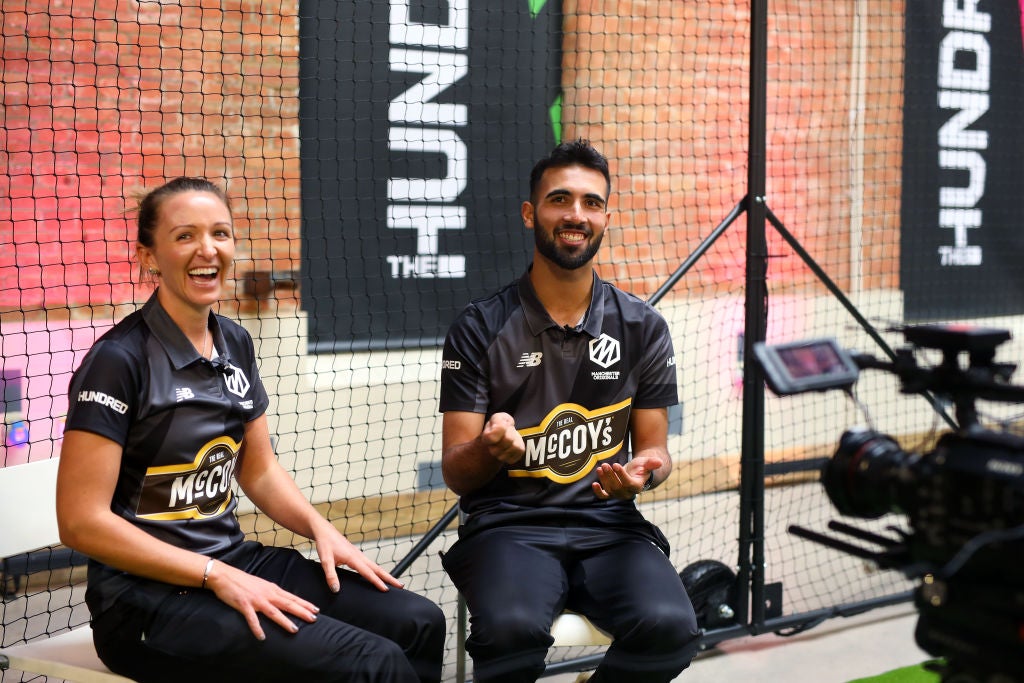The Hundred: Long wait for cricket’s newest adventure must end in success for all
More than three years in the making but the bright new light of the sport is finally ready to shine

Your support helps us to tell the story
From reproductive rights to climate change to Big Tech, The Independent is on the ground when the story is developing. Whether it's investigating the financials of Elon Musk's pro-Trump PAC or producing our latest documentary, 'The A Word', which shines a light on the American women fighting for reproductive rights, we know how important it is to parse out the facts from the messaging.
At such a critical moment in US history, we need reporters on the ground. Your donation allows us to keep sending journalists to speak to both sides of the story.
The Independent is trusted by Americans across the entire political spectrum. And unlike many other quality news outlets, we choose not to lock Americans out of our reporting and analysis with paywalls. We believe quality journalism should be available to everyone, paid for by those who can afford it.
Your support makes all the difference.On 19 April, 2018, the ECB organised a meeting of journalists to announce The Hundred, which begins this Wednesday. There were two distinct oddities about the event.
The first was that it was not an event at all. The “meeting” was remote – unnecessary in a time before Covid-19 – conducted entirely over the phone. It was stale and at times farcical, with the three main speakers Tom Harrison (ECB chief executive), Sanjay Patel (who was to become managing director of The Hundred) and Clare Connor (who was to move on from overseeing the women’s competition), talking over each other every now and again. There was the odd contradiction, such as the last over being a compulsory 10 balls, which was then rowed back on a few minutes later.
For a marquee announcement, one of the most seismic in the board’s recent history, it was oddly small fry.
More peculiar than the superficial, however, was the format. Because until that teleconference, every noise made by the ECB pointed to the new competition being an eight-team Twenty20 affair. It was only on that fateful Monday the full details of cricket’s fourth format were out in the public domain, beyond news in 2017 that something big was on the horizon as part of a bumper broadcast deal.
There was nothing particularly wrong with that. There was no explicit lying, though perhaps the odd fib of omission. When Harrison wrote about what was coming in the 2018 edition of the Wisden Almanack – released earlier in that April – he never let on that it wouldn’t be T20 but never hinting there would be a new format, either. It was all a bit too cute.
Marching on more than three years, here we are, after more high-profile launch parties, a fractured domestic fanbase and a tournament that, delayed by a year, feels more beholden to hope than careful planning. Covid’s potent delta variant and the unpredictability of contact tracing has decimated entire teams over the last fortnight – be it England’s men or various county outfits. But the sketchy trip to the starting line this Wednesday has also served as a reminder that every moment since The Hundred entered cricket’s lexicon there have been constant PR scraps, be it working out what it would actually be or trying to somehow justify why a fourth format was required at all.
The founding tenets are well-meaning: make English cricket more self-sufficient, a shot in the arm for dwindling participation numbers, grow women’s cricket across the board and make the game more accessible to the socially and economically diverse communities previously ignored. A £1.3bn deal with Sky and BBC between 2020 and 2024, Dynamos and inner-city initiatives, the women’s Hundred and affordable tickets for families ticked those four boxes.
Conspiracy theorists litigate the case that the express plan was to destroy county cricket as we know it. But given the way the money is set to be spread, that never quite rung true.
Nevertheless, the ECB found good faith hard to come through their own public and private messaging. Traditionalists were told The Hundred wasn’t for them, and took that personally. Even the prospective “new audience” were made to feel small, with talk of simplicity being the key to attract mums and kids specifically. For those in the middle, there was chat of the need to reduce the length of T20 games to fit terrestrial television schedules. IPL matches, which run on for four hours, were cited, ignoring the fact the Blast – England’s domestic T20 competition – had avoided this with enforced punitive run penalties for slow teams to ensure games wouldn’t run late.
It did not help that every public utterance from then ECB chairman Colin Graves exacerbated the disingenuous tones. As he rallied against traditional supporters with well-meaning reservations, by association, so did the governing body.
We then got to a stage when a new quirk was leaked every week. Different coloured balls, in-game substitutions with teams of up to 15 players, simpler scoreboards and “outs” instead of wickets, to name but a few. Most have fallen by the wayside, most dramatically “outs” which was a key aspect in briefings at the BBC and Sky among its commentary team before an almighty backlash on social media had competition organisers backtracking.
From the outside, it seemed a lot of this was being made up as it went along. In a way, the pandemic has helped. While a 2020 launch would have been ideal to ride the wave of the 2019 World Cup win from England’s men and an entertaining Ashes series, sources within Sky and the BBC admit it would have been a rush to establish the tone and framing needed to do justice to English cricket’s new standout event.
The inaugural draft that took place in October 2019 was instructive, even if it is now borderline obsolete given the number of high-profile absentees due to you-know-what. Sky Sports’ studios in Isleworth were decked from top to bottom in branding of The Hundred. And while there were regrets that it lasted too long, along with the ECB’s insistence that players and journalists were kept apart – creating a staler and more formal atmosphere – this marked a number of important firsts.
From that point on, both broadcasters have not put a cap on their ambitions, collaborating throughout. The most front-facing moves have seen them align with pop culture through their respective associations with musicians and across their other outlets – Sky, for example, will lean on Sky Arts to showcase the competition’s off-field artists, while the BBC have their plethora of radio stations.
Sky are also taking their award-winning coverage to new heights with computer-generated avatars to enhance both their analysis and the general viewer experience. Created with MetaStar Dimension Studio, these avatars will allow them to take technique analysis to greater lengths, which is likely to then feed into their coverage of other formats. Indeed, such innovation will benefit how traditionalists consume the formats they cherish.
Not that those fans will necessarily buy into that sentiment. In fact, you could argue “established” lovers of the game have had their scepticism fired up yet further over the last season – any cursory scan of county cricket discussion online will highlight how much resentment there is from so many cricket lifers. That the spate of positive Covid cases means the 50-over county competition will be pilfered if there are replacements needed in The Hundred has not helped on this front in the week before opening night.

Similarly, some of the altruism underpinning the competition has come apart at the seams. The women’s competition, for example, has been lauded as a giant leap, exceeding the work of the now-defunct Kia Super League. Equal prize money and the fact the whole thing opens with a women’s fixture between Oval Invincibles and Manchester Originals were regarded as unequivocal statements of support.
However, that was punctured after a story in TheDaily Telegraph revealed Australian stars such as Meg Lanning and Alyssa Healy were offered an extra £10,000 on top of their original salaries to honour their deals. Given the disparity between pay – the women’s contracts range from £3,600 to £15,000, while the bottom tier of the men’s is £24,000 and goes up to £100,000 – it confirmed more money was available but wilfully not distributed accordingly. It underlined what a mistake it was to pay the women so little compared with the men, something that was easy to fix but wasn’t.
The question we return to is why did it have to be like this? Why did the ECB see it fit to spend the majority of their £70m reserves on this unicorn? Why have they gambled so much of their game on this? Because they believe in it. And for all the rightful criticism of their practises these last few years, claiming they want to ruthlessly destroy all that comprises the status quo has always been several leaps too far.
The fact of the matter is we know not of The Hundred’s effect as yet, positive or negative. Ticket sales are said to have exceeded 350,000 – even if not all of those are “sales” – while a profit of £50m in its first year has been talked up. Only time will tell if those numbers and the ECB’s hunch plays out as they expect.
For now, the show finally gets underway and, as bitter pill as it proves to be, it needs to be swallowed. Whatever The Hundred is, whatever it isn’t and whatever it proves to be can be argued on the periphery. Above all, it must be a success. A failure would be too costly to bear.
Join our commenting forum
Join thought-provoking conversations, follow other Independent readers and see their replies
Comments